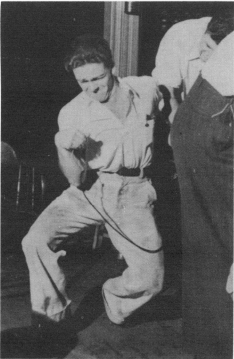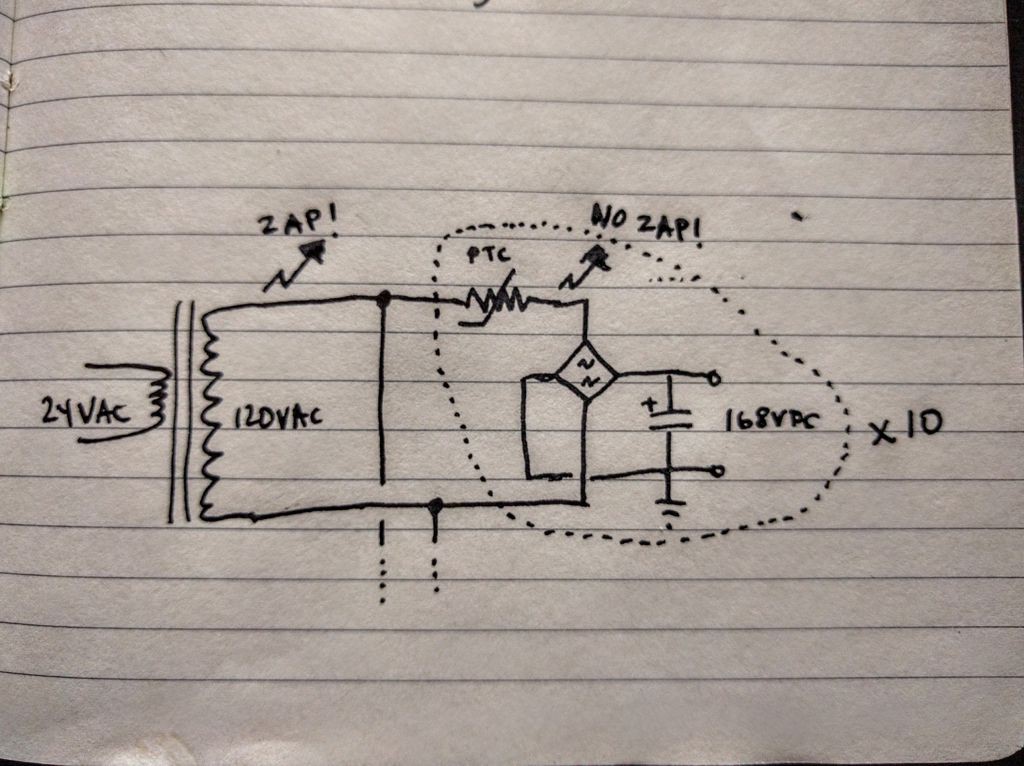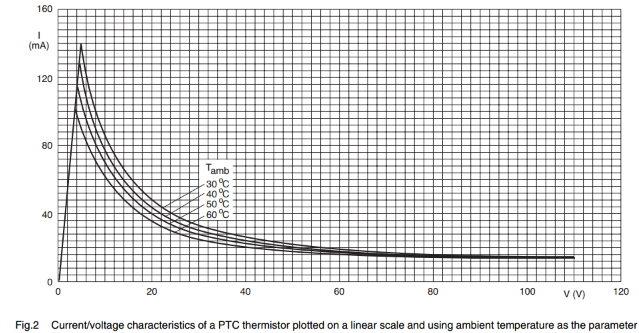Imagine some awesome person builds the calculator. They're messing around inside under the worst possible circumstances. Specifically, the power is still on, using both hands, one poking with a metal-handled screwdriver and the other touching ground. Also, they're hot and sweaty and in Florida on the most humid day ever recorded.
Will tomorrow's newspaper read Florida Man Electrocutes Self With Calculator?
I came across this great article from 2012 by Mark Voigtsberger entitled Small Contact Voltage Not Lethal to Human. The premise is that simplistic guidelines like "It's not the voltage that kills you; it's the current" and "100mA and up is lethal" simply aren't accurate. For example, 5VAC cannot kill you. Ever. He cites several authors, including Charles F. Dalziel (1904–1986).
Dalziel delighted in shocking people in the 1950s at the University of California, Berkeley. His paper Effects of Electric Shock on Man, besides being both a great band name and a sphincter-clenching title, is full of data. Also full of humorous images like this one:

"Determination of let-go current" featuring (presumably) a grad student who was totally getting an "A" in Dalziel's class. Because if he didn't, it wasn't worth it.
According to his memorial, Dalziel started his study on the effect of electric shock on living creatures by trying to kill houseflies with electricity. He soon graduated to livestock. I think you can see where this is going.
But there is another reason you should know Dalziel's name: he turned his powers over to the forces of good by inventing the ground-fault current interrupter that is required in all homes in the US today. This is the thing that implies that a movie where someone dies from a toaster to the bathtub clearly takes place in a house that's not up to Code.
Dalziel passed away, apparently quietly and not at all from electrocution, in 1986.
Anyway, Voightsberger runs Utility Testing and Geographic Information Systems, compiling data on shocks and electrocutions. In his article, Mike states that no electrocution has ever been reported in the medical literature for any voltage below 50V (I assume this is AC), aside from "operators of DC electric welding equipment", whom I presume died of other things like maybe molten steel in the eye.
There are two reasons for this lack of observed deaths.
First, at its absolute worst, the body's electrical resistance (I assume along some path that crosses the heart) is 500 ohms. We're talking hotter and sweatier than anyone has ever been.
Second, the thing that actually kills you, and this is the thing that Dalziel's experiments showed, is an energy of 13.5W-sec applied in under three seconds.
Let's see what this means. Assume 4.5 watts dissipated by a hot, sweaty 500-ohm body over the course of three seconds. According to the study, less than that cannot kill you. Sure, it might hurt like hell and you might black out, but it won't kill you. Anyway, application of the usual equation shows that such a power can only be achieved by a 47-volt supply. Or, about 50 volts.
Therefore, less than 47 volts cannot kill you. It is only past that threshold that lethality starts to become possible.
Now, given that we have 168VDC coursing through the calculator, Pokey McSweatyPants can die unless we can somehow reduce his exposure to under 4.5 watts, or 26mA at 168V. (Interestingly, the threshold for DC lethality is higher than for AC, but we'll use the AC threshold for safety.) We can't do anything about the transformer itself, since that must be capable of delivering at least 144mA (80 tubes x 1.8mA each -- I was able to lower the current empirically). So touching the transformer would be lethal. We would just have to protect the terminals under epoxy, maybe.
We might segment the power supply for eight tubes at a time (14.4mA). So ten rectifiers, each with its own capacitor. Touching this capacitor might hurt, but wouldn't be anything near enough to kill you. As stipulated in the previous log, if we want to drop no more than 8V in 1/120 seconds, the capacitor for 14.4mA would be 15μF. The energy of such a capacitor at 168VDC is 210mJ. A Joule is a watt-second, and 0.21W-sec is nowhere near the lethal amount.
Now, there's one tiny flaw in this plan. There's still nothing limiting the supply current if you short your 500-ohm body across one of the capacitors. You'd get 168VDC across that, which is 57W and thus lethal. We want to current-limit each segment of the supply before it hits its rectifier.
I think this can be done with a PTC resettable fuse, something like like this:

A PTC is just a resistor with a Positive Temperature Coefficient, meaning that it gets hot, and as it gets hot its resistance goes up. PTC fuses have their resistance shooting way up quickly. The specs for a PTC fuse give a hold current and a trip current, where the fuse will go off somewhere between the hold and trip current. The Amphenol YM120C15N182 PTC has a hold of 16mA and a trip of 23mA, which means we'd never hit the lethal 26mA at 168V. The PTC would blow first, hopefully within three seconds. Maddeningly, the datasheet doesn't give a time to trip, so I'd have to experiment, or find a part with similar hold and trip currents that does have a defined time to trip.
Here's what the I/V curve for a PTC looks like (from Vishay's PTC Electrical and Mechanical Properties).

PTCs can take any amount of time to reset. Sometimes they never reset. But hey, at least you're not dead.
 robert.c.baruch
robert.c.baruch
Discussions
Become a Hackaday.io Member
Create an account to leave a comment. Already have an account? Log In.